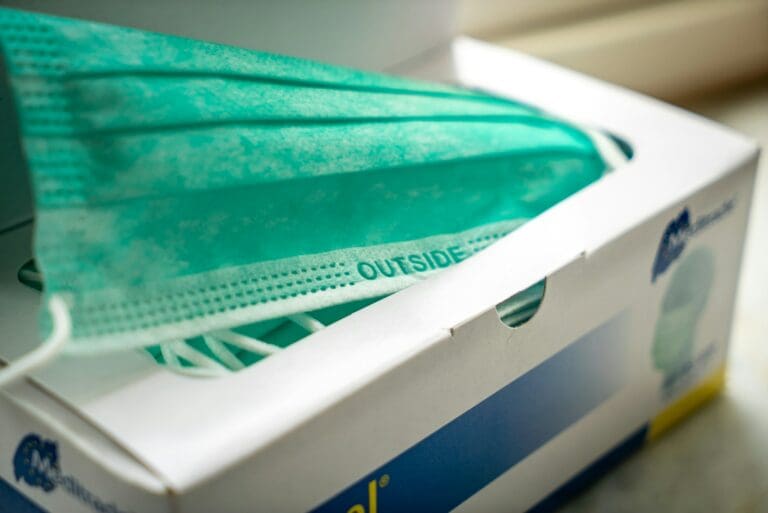Don’t let these illnesses ruin your summer or worse; for most of these illnesses, acute care should be sought out.
Lyme Disease
With the weather heating up, we need to be careful about the bugs and animals that come out with it. Creepy crawlies are coming out of their homes ready to latch on to anyone that comes their way. One of these being ticks. According to the CDC, an estimated 300,000 Lyme Disease infections occur each year, most of which occur during the summer.
To make matters worse, America is the number 1 place for tick infections and bites. According to the EPA, the United States harbors about 95% of the nation’s Lyme disease infections. Going further, as shown in the CDC provided chart below, it’s clear that the Northeast is the most at risk.
https://www.cdc.gov/lyme/stats/maps.html
So how do you know you have Lyme Disease, what are the most common symptoms of Lyme disease?
Some of the most common early symptoms are rash, chills, fever, body aches, headaches, and swollen lymph nodes. The most common rash of Lyme Disease resembles a bull’s eye on a dartboard. The rash tends to have a red center, surrounded by a clear ring with a red circle around it. The rash will usually appear within 30 days of a bite from a tick that carries the Lyme disease bacteria.
If gone untreated, the symptoms can progress to include: joint pain and neurological problems. According to the Mayo Clinic, these symptoms may vary, they come in stages, and the stages could overlap within a few days up to a month of the bite. Preventing Lyme Disease is as easy as doing daily tick checks; checking behind your ear, in your hair, removing your clothes and checking your body. It’s important to do so, especially after hiking, camping, fishing, and going on walks.
Poison Ivy
A rash from poison ivy is actually an allergic reaction to the oils on the leaves and the stem of poison ivy, poison oak, and poison sumac. 85% of the United States population is allergic to these plants, affecting 50 million Americans a year. It’s a widely known rash that most people can spot right away: redness, extreme itchiness, and blisters.
Initial home remedy treatments involve over-the-counter corticosteroid cream for the first few days. Apply Calamine lotion. Take oral antihistamines, such as Benadryl, which may also help you sleep better. Soak in a cool-water bath containing an oatmeal-based bath product (Aveeno)
What most people don’t know is that a reaction to poison ivy can be dangerous. It isn’t all just itchiness.
If severe enough, you will need to be seen by a Medical Provider. The severity of the rash will depend on how much of the plants’ oil gets on your skin and how long it goes untreated. If you inhale burning poison ivy and experience trouble breathing, get help ASAP.
FoodBorne Illnesses/Food Poisoning
Foodborne infections thrive in warmer weather, and if we aren’t careful, they can really make us sick. A foodborne infection is transferred from mishandled foods to you. According to the US Department of Agriculture, the reason foodborne infections are so common during the summer is because bacteria multiply in warmer weather, and preparing foods outdoors makes safe food handling more difficult.
Food poisoning affects 1 in 6 Americans every year. CDC estimates 48 million people get sick from foodborne illness, 128,000 are hospitalized and 3,000 die. Researchers have identified 250 foodborne diseases. MedicalNewsToday.com states that many cases are mild, and can go away on their own after experiencing one or more of these symptoms: vomiting, diarrhea, and abdominal cramping. However, it is important to recognize when food poisoning is severe and you do need to seek a professional Medical Provider.
Severe dehydration, muscle pain/weakness, dizziness, and a fever are all signs you need to seek medical attention. So how do you prevent Food poisoning?
According to the US Department of agriculture, there are 5 precautions to follow:
- WASH YOUR HANDS AS OFTEN AS POSSIBLE
- Don’t cross contaminate
- Keep hot foods hot and cold foods cold
- Cook foods at the right temperatures
- And finally, safely and properly store your leftovers
Heat Exhaustion
Heat exhaustion is one of the top 3 heat related health conditions, with heat cramps being mild, and heat stroke being the most severe, heat exhaustion falls right in the middle and needs to be taken seriously. According to the Mayo Clinic, heat exhaustion is caused by “exposure to high temperatures, particularly when combined with humidity and physical activity.” This is a huge risk as the weather starts warming up and you and your family are spending more and more time outside. Heat exhaustion is essentially your body failing to cool itself down. This causes you to feel extreme dizziness, your skin will feel cool to the touch, heavy sweating, low blood pressure, fatigue, and muscle cramps. It’s important to know how to handle heat exhaustion when you or someone else is experiencing it. First, stop what you are doing and take a rest in a cooler spot. Staying hydrated is a sure way to prevent or help heat exhaustion. Heat exhaustion is a serious condition that, according to the National Safety Council, has caused 87 people to die in 2017. “Fun in the sun” needs to be safe for you and everyone around you.
Swimmers Ear
Swimmers ear, or Otitis Externa, is an infection that runs from the hole of your outer ear to your eardrum, called your ear canal. To many people, Swimmers ear is just a given when you spend the day at the beach or the pool, But what most people don’t know is that you can get it while on dryland too! Of course swimming is going to be the number one cause of swimmer’s ear, but anything that causes a break in the skin of the ear canal can cause an infection. According to KidsHealth.org eczema and scratching of your ear, putting foreign objects in the ear (yes, that includes Q-Tips), and vigorous ear cleaning, can all cause swimmer’s ear. Ear pain, itchiness, swollen and redness, trouble hearing, and ear drainage are all common symptoms of Swimmer’s Ear! Treatment involves over the counter analgesics; Tylenol or Ibuprofen for pain management and topical ear drops to treat bacterial infection and reduce the swelling in the ear canal.
Summer is all fun and games, with school being out and the nice weather, but getting sick is a sure way to put a damper on your summer activities. We are here to help you enjoy every single day of your summer by staying safe and healthy! With our amazing team of Medical Providers, we can diagnose and treat your summer illnesses!
Keeping you safe and healthy is our number one priority!

